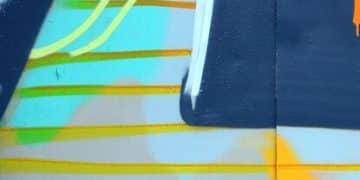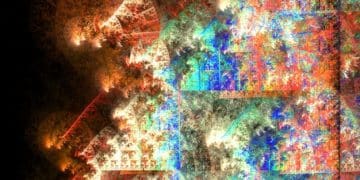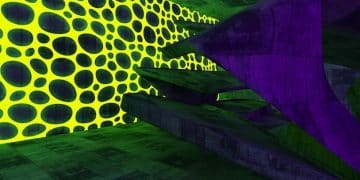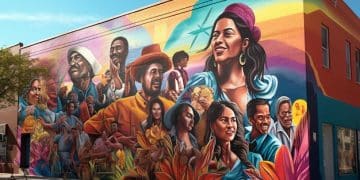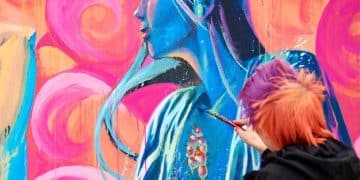Graffiti’s Digital Leap: Tech Transforms Street Art
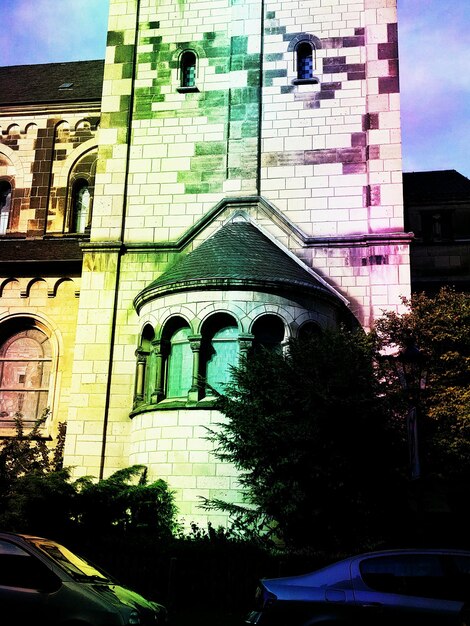
The evolution of graffiti is profoundly shaped by technology, allowing street artists to create interactive experiences that push traditional boundaries, fostering new forms of expression and engagement within urban landscapes.
The urban canvas, once dominated by spray paint and ink, is undergoing a profound transformation. This isn’t just about new styles or vibrant colors, but a fundamental shift driven by technological innovations. The evolution of graffiti: how street artists are using technology to create interactive art is redefining what street art can be, moving beyond static images to dynamic, immersive experiences that truly engage an audience.
From Walls to Pixels: The Digital Renaissance of Street Art
The traditional art form of graffiti, long associated with raw expression on concrete and brick, is now embracing a digital renaissance. This shift isn’t merely about incorporating digital tools but rethinking the very nature of street art as an interactive, evolving medium.
The Rise of Projection Mapping
One of the most striking technological advancements in street art is projection mapping. Artists can transform entire buildings into dynamic canvases, projecting intricate animations and interactive imagery onto their surfaces. This technique allows for temporary, large-scale installations that minimize physical impact while maximizing visual spectacle. It blurs the lines between art, architecture, and technology, creating ephemeral masterpieces that change with the push of a button.
- Large-scale ephemeral art: Transforms urban spaces without permanent alteration.
- Dynamic and animated content: Adds movement and storytelling to static structures.
- Reduced legal risks: Often bypasses traditional vandalism laws due to temporary nature.
- High visual impact: Captures immediate attention and generates public interest.
LEDs and Smart Lighting Integration
Beyond projections, the integration of LED lights and smart lighting systems into physical graffiti pieces is adding new layers of interactivity. Artists are embedding programmable LED strips or light panels directly into their murals, allowing the artworks to change colors, patterns, or even respond to external stimuli like sound or motion. This creates a living piece of art that adapts to its environment and engages viewers in unexpected ways. Imagine a mural that pulses with light to the rhythm of ambient street noise, inviting passersby to pause and observe.
This innovative approach moves street art firmly into the realm of digital media, opening up possibilities for artists who once relied solely on paint and brushes. The distinction between the physical and the virtual becomes increasingly blurred, leading to truly hybridized art forms. The inherent transience of some of these tech-driven pieces, particularly projection mapping, also adds a unique narrative element, emphasizing the temporal nature of urban existence and creativity. These digital augmentations represent a significant leap from the static murals of the past, offering a new frontier for public artistic expression.
Augmented Reality: Bringing Graffiti to Life
Augmented Reality (AR) stands as a pivotal technology in the modern evolution of street art, offering a dynamic bridge between the physical and digital realms. It allows artists to overlay digital content onto real-world graffiti, unlocking layers of visual and narrative depth that were previously impossible.
Interactive Overlays and Storytelling
Imagine pointing your smartphone at a seemingly static mural and watching its characters animate, or hidden messages materializing before your eyes. AR apps enable artists to embed digital animations, soundscapes, or even 3D models into their street art. This technology transforms passive viewing into an active, immersive experience. Viewers become participants, using their devices to unveil the artwork’s hidden dimensions, revealing stories or playful interactions that are invisible to the naked eye. This not only enhances the visual appeal but also allows artists to convey more complex narratives or provide behind-the-scenes insights into their creative process, accessible directly through the artwork itself.
AR-Enhanced Murals and Installations
Artists are increasingly designing murals specifically with AR in mind, creating a synergy between the painted surface and the digital layer. These are not merely decorative additions; they are integral components of a single, multi-faceted artwork. For instance, a painted character might appear to breathe or speak through an AR overlay, or an abstract pattern could swell and pulsate with digital light. This fusion gives street art a longevity beyond its physical presence, as the digital layers can be updated or changed, offering a continuously evolving experience. The ability to create dynamic, interactive elements without physically altering the urban environment is a significant advantage, particularly in areas where traditional graffiti might face regulatory challenges. AR also facilitates a global reach, as digital experiences can be shared and accessed from anywhere, transcending geographical boundaries.
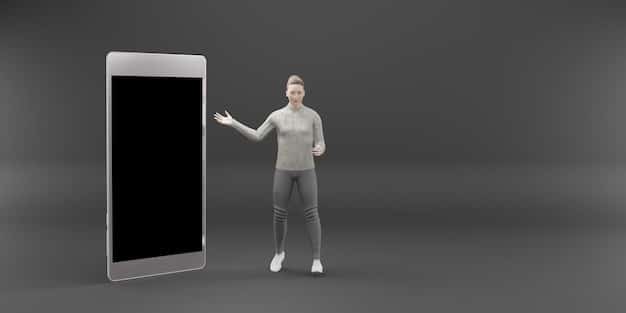
The continuous innovation within AR technology, coupled with the creative vision of street artists, suggests a future where urban landscapes are alive with hidden digital narratives, waiting to be discovered by those ready to engage. This blend of traditional artistic skill with cutting-edge technology truly embodies the spirit of innovation in action.
Sensors and Connectivity: Responsive Urban Art
The integration of sensors and connectivity into street art pieces represents a profound evolution, moving discrete artworks towards responsive, interactive installations. This technological leap allows graffiti to react to its environment and its inhabitants, fostering a dialogue between the art and the public in dynamic new ways.
Motion and Sound-Activated Artworks
Artists are now incorporating motion sensors, sound sensors, and even environmental sensors into their creations. Imagine a piece of street art that glows brighter as a crowd gathers, or changes its visual composition based on the ambient noise levels of a bustling city street. These sensors enable the artwork to respond to human presence, movement, or specific sounds, transforming passive viewing into an immersive, participatory experience. This responsiveness creates a sense of surprise and wonder, captivating passersby who stumble upon these living installations. The art piece no longer just exists; it acknowledges and interacts with its audience.
Smartphone Integration and Public Interaction
Connectivity, particularly driven by smartphone integration, allows for direct public interaction with street art. QR codes, NFC tags, and dedicated mobile apps are becoming common tools. By scanning a code or tapping a tag, viewers can:
- Unlock additional content: Access artist interviews, process videos, or historical context.
- Trigger specific effects: Change colors, activate animations, or play soundscapes via their phone.
- Leave digital marks: Contribute to a collaborative artwork or leave comments that appear virtually.
- Participate in ongoing narratives: Influence the evolution of the piece over time.
This level of interaction transforms the audience from mere observers into co-creators, deepening their engagement and connection with the artwork. The technology bridges the gap between the artist’s initial vision and the public’s real-time experience, fostering a truly collaborative and evolving urban artistic landscape. These interconnected art forms push the boundaries of public art, reflecting the increasingly digital nature of modern human experience.
Data-Driven Graffiti: Art as Information Display
The frontier of graffiti is expanding into the realm of data visualization, where street art transcends mere aesthetic appeal to become a dynamic display of information. This innovative approach integrates real-time data feeds into artistic expressions, making complex information accessible and engaging within the urban environment.
Real-time Data Visualization in Murals
Imagine a mural that visually articulates local air quality, traffic patterns, or even social media trends, all in real-time. Artists are using digital screens embedded into physical structures, or even projection mapping, to display this information graphically. These are not static infographic posters; the data drives dynamic visual changes in the artwork. For instance, a section of the mural might glow green when air quality is good, or animate frantically when traffic is congested. This allows for a continuous, evolving commentary on the urban environment, turning public art into a living canvas of civic information. It transforms abstract datasets into tangible, visually compelling narratives that resonate with local communities.
Interactive Art Reflecting Community Data
Beyond purely environmental data, some artists are exploring how community-generated data can influence their art. This might include anonymous social media sentiment from local discussions, voting patterns, or even aggregated movement data from public spaces. The artwork could then visually represent the collective mood, concerns, or activities of a neighborhood. This fosters a unique form of community engagement, where the art not only beautifies but also informs and reflects the pulse of its surroundings. Such installations can function as subtle but powerful public dashboards, promoting awareness and fostering dialogue about local issues without feeling overtly didactic. The goal is to make data palpable and relevant, embedding it within the cultural fabric of the urban landscape. This convergence of art and information science offers a compelling vision for future public spaces, where beauty and utility intertwine.
Collaborative Platforms and Remote Creation
The digital age has fundamentally altered how artists collaborate and create, extending the reach of graffiti beyond geographical confines. Online platforms and remote technologies are fostering new forms of collective artistry, transcending the traditional solitary act of painting a wall.
Virtual Collaboration Tools for Street Artists
Online collaboration tools, previously common in design and software development, are now empowering street artists to work together across continents. Artists can share sketches, refine concepts, and even digitally preview installations on virtual models of urban spaces before a single drop of paint is applied. This removes logistical barriers, allowing diverse talents to converge on a single project. The ability to iterate and provide feedback in real-time within a shared digital workspace ensures a cohesive vision, even when team members are thousands of miles apart. This fosters not only shared creation but also a rapid exchange of ideas and techniques, pushing artistic boundaries collectively. The preparatory phase of street art, once intensely local, is now a globally networked endeavor.
Crowdsourced Graffiti and Collective Art Projects
Technology also enables crowdsourced graffiti, where multiple individuals contribute to a single artwork, often without physical proximity. Concepts might begin as digital templates, allowing participants worldwide to add their unique marks or designs. These contributions are then pieced together—either digitally for a projection, or physically reproduced by a lead artist—creating a truly collective piece.
- Online design challenges: Public submits ideas, influencing the final artwork.
- App-based contributions: Users can ‘paint’ digitally on a shared canvas that translates to a projection.
- Voting mechanisms: Community chooses elements or themes for the next iteration of a piece.
- Digital “tagging” on virtual walls: Later manifested physically or projected.
This democratic approach to art-making transforms spectators into participants, fostering community ownership and broadening the definition of what constitutes an artist. It encapsulates the inclusive spirit of hip-hop culture, where collective expression is often paramount. These projects often bridge the gap between digital interaction and tangible presence, resulting in art that reflects a wider spectrum of voices and ideas.
Challenges and Ethical Considerations
As technology continues to reshape graffiti, new challenges and ethical considerations inevitably arise. The very tools that empower street artists also introduce complexities regarding authenticity, accessibility, and the delicate balance with urban environments.
Authenticity vs. Digital Manipulation
One of the primary debates revolves around the concept of authenticity. Is a projection-mapped installation, which is temporary and often software-driven, as “authentic” as a hand-painted mural? The ease of digital manipulation raises questions about the artist’s original intent versus the potential for alterations by others. Preserving the raw, often spontaneous nature of traditional graffiti becomes a challenge when digital layers and interactive elements are involved. There is a continuous tension between embracing technological innovation and maintaining the ethos of street art as a direct, unmediated form of expression. The debate often centers on whether the medium itself dictates the art form’s integrity.
Accessibility and Digital Divide
Interactive digital graffiti often relies on access to smartphones, reliable internet, or specific apps. This creates a potential digital divide, where segments of the population who lack these resources might be excluded from fully experiencing or participating in the artwork. If street art is meant to be democratic and accessible to all, questions arise about how inclusive these tech-heavy installations truly are. Artists must consider whether the technology enhances access or inadvertently creates new barriers. Efforts must be made to ensure that the core artistic message remains impactful even for those unable to interact digitally, or to design experiences that are universally engaging regardless of device ownership. This issue underscores the importance of equitable access within the digital realm.
Legal and Environmental Impact of Tech Art
The legal implications of tech-driven street art are still evolving. While projection mapping might avoid property damage, questions about public nuisance, light pollution, or copyright issues for digital content can emerge. The environmental impact also comes into play: the energy consumption of powerful projectors, LED screens, and the lifecycle of electronics used in installations are concerns. Sustainable practices in designing and implementing these artworks are becoming increasingly important. Artists are challenged to create impactful art that is also environmentally conscious, minimizing their carbon footprint. Navigating these legal and environmental considerations thoughtfully is crucial for the sustainable growth of tech-integrated street art.
| Key Technological Shift | Brief Impact |
|---|---|
| 💡 Projection Mapping | Transforms buildings into dynamic, temporary canvases with animated visuals. |
| 📱 Augmented Reality (AR) | Overlays digital content onto physical art, creating interactive hidden layers. |
| 📊 Data Integration | Artworks display real-time information, turning murals into living data visualizations. |
| 🤝 Collaborative Platforms | Enables remote teamwork and crowdsourced contributions, expanding global artistic reach. |
Frequently Asked Questions
Technology is moving graffiti beyond static images. Tools like projection mapping allow artists to create temporary, large-scale animations on buildings, while augmented reality apps overlay digital content onto physical murals, making them interactive. Smart lighting and sensors also enable artworks to respond dynamically to their environment, blurring the lines between physical and digital art.
Augmented Reality (AR) enables artists to add interactive digital layers to their physical street art. Viewers can use their smartphones to see animations, 3D models, sounds, or hidden messages appear over a mural. This turns a static piece into a dynamic experience, allowing for deeper storytelling and transforming passive observation into active engagement, creating a direct link between the art and the audience.
Absolutely. Many modern interactive street art pieces don’t require physical contact. Technologies such as motion sensors, sound sensors, or light sensors allow artworks to react to environmental cues or human presence. Projection mapping can create interactive surfaces where digital elements respond to movement from a distance, or QR codes can link to web-based experiences, all without direct physical interaction.
Artists integrating technology face several challenges, including debates on authenticity versus digital manipulation, ensuring accessibility for all audiences despite the digital divide, and navigating evolving legal frameworks regarding public installations. Environmental concerns related to energy consumption and electronic waste also pose ethical considerations that artists must address to ensure sustainable artistic practices.
Technology has revolutionized collaboration by enabling artists to work together remotely. Virtual collaboration platforms allow sharing of designs, real-time feedback, and joint conceptualization of projects across different geographical locations. Crowdsourcing tools and social media also empower multiple artists or even the public to contribute to a single artwork, creating diverse and globally influenced pieces that foster new forms of collective artistic expression.
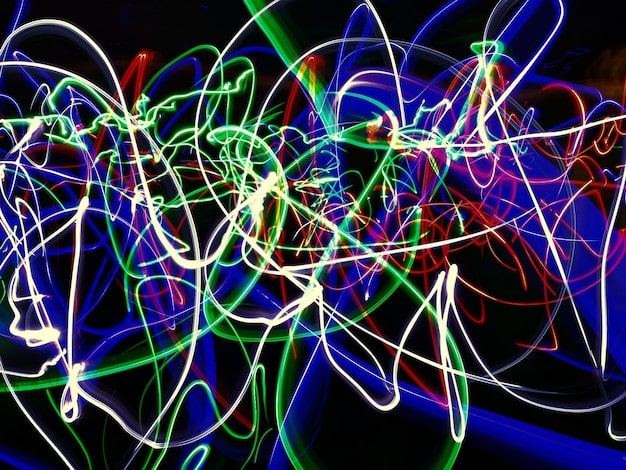
Conclusion: The Future Canvas is Hybrid
The journey of graffiti from illicit wall markings to sophisticated, interactive urban art is a testament to human creativity and technological ingenuity. As we’ve explored, the integration of projection mapping, augmented reality, sensor technology, data visualization, and collaborative platforms has profoundly reshaped what street art can be. No longer confined to static imagery, graffiti is evolving into a dynamic, responsive, and deeply engaging medium. While challenges regarding authenticity, accessibility, and environmental impact persist, these are merely new frontiers for artists to navigate. The future of street art is undeniably hybrid, blending traditional techniques with cutting-edge digital tools, transforming our urban landscapes into living, breathing canvases that reflect the pulse of the digital age. This ongoing evolution ensures that graffiti remains a vibrant, relevant, and ever-surprising form of artistic expression, continually pushing boundaries and captivating audiences worldwide.
